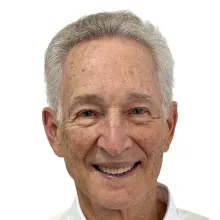
Dr. Murray Sargent III earned his undergraduate and graduate degrees in theoretical physics from Yale University where his PhD advisor was Nobel Laureate Dr. Willis E. Lamb, Jr. (who would later join the faculty of the University of Arizona’s Optical Sciences Center).
Receiving his PhD from Yale in 1967, Murray started his career at Bell Laboratories in Holmdel, New Jersey, continuing his research interests in laser physics. Murray also had an early interest in adapting computers for typesetting complex mathematical equations, creating the first computer language for this purpose - SCROLL (String and Character Recording Oriented Logogrammatic) with the encouragement of Ralph Griswold and colleagues at Homdel. SCROLL was the first facility capable of typesetting mathematical equations on a computer.
In 1969, Drs. Marlon Scully and Stephen Jacobs convinced Murray to join the University of Arizona Optical Sciences Center as a faculty member in its original quantum optics group. Here, he worked on theories for many laser phenomena including ring lasers, distributed feedback lasers, semiconductor lasers mode locking and multiwave mixing. He also continued his interest in computer programming languages, teaching a special studies computer science program at the University’s Department of Electrical Engineering. To promote computer science at the University, he convinced Ralph Griswold to join the University, becoming its first professor of computer science who subsequently created the department and remained head until 1981. Murray also developed the PS technical word processor (1980s) which was often used at the Optical Sciences Center and also to typeset some of his own papers and books.
He also developed the SST debugger, which could run real-mode programs in protected mode, thereby enabling them to access all of memory instead of just 640 kilobytes. This caught the eye of Microsoft. While still a professor at the University, Murray accepted a consulting role during the summer months to help Microsoft’s CodeView debugger run in protected mode. This effort led to running Microsoft Windows 3.0 in protected mode without the famous 640 kilobyte RAM barrier. Then in 1992, he accepted a full-time position at Microsoft with a goal of enabling better display and editing of mathematical text in Microsoft Office. He later moved to the Microsoft Office Business Unit to work on the RichEdit text editor and Microsoft Office math.
His contributions to science include authoring over 100 publications in scientific journals and coauthoring seven books – three on laser physics and four on personal computers. He holds four patents and wrote monthly posts for his blog, Math in Office, from 2006 to 2023.
Avid outdoors people, Murray and Kamie enjoy travel, bike riding, skiing, scuba diving and hiking/trekking. Murray day hiked the Grand Canyon rim-to-rim twice and summited Mount Baker (10,781 feet) and Mount Rainer (14,411 feet). In 2010, the couple trekked to the Mt. Everest base camp and summited Kala Pathhar, at an elevation of 18,514 feet. Other treks included the Annapurna Circuit, Mt. Kilimanjaro, Machu Picchu and the Haute Route from Chamonix to Zermatt.
In addition to their recent endowed chair donation, the Sargents previously made significant gifts to the University of Arizona helping to establish the Willis Lamb, Jr. Graduate Student Scholarships in Optical Sciences.
